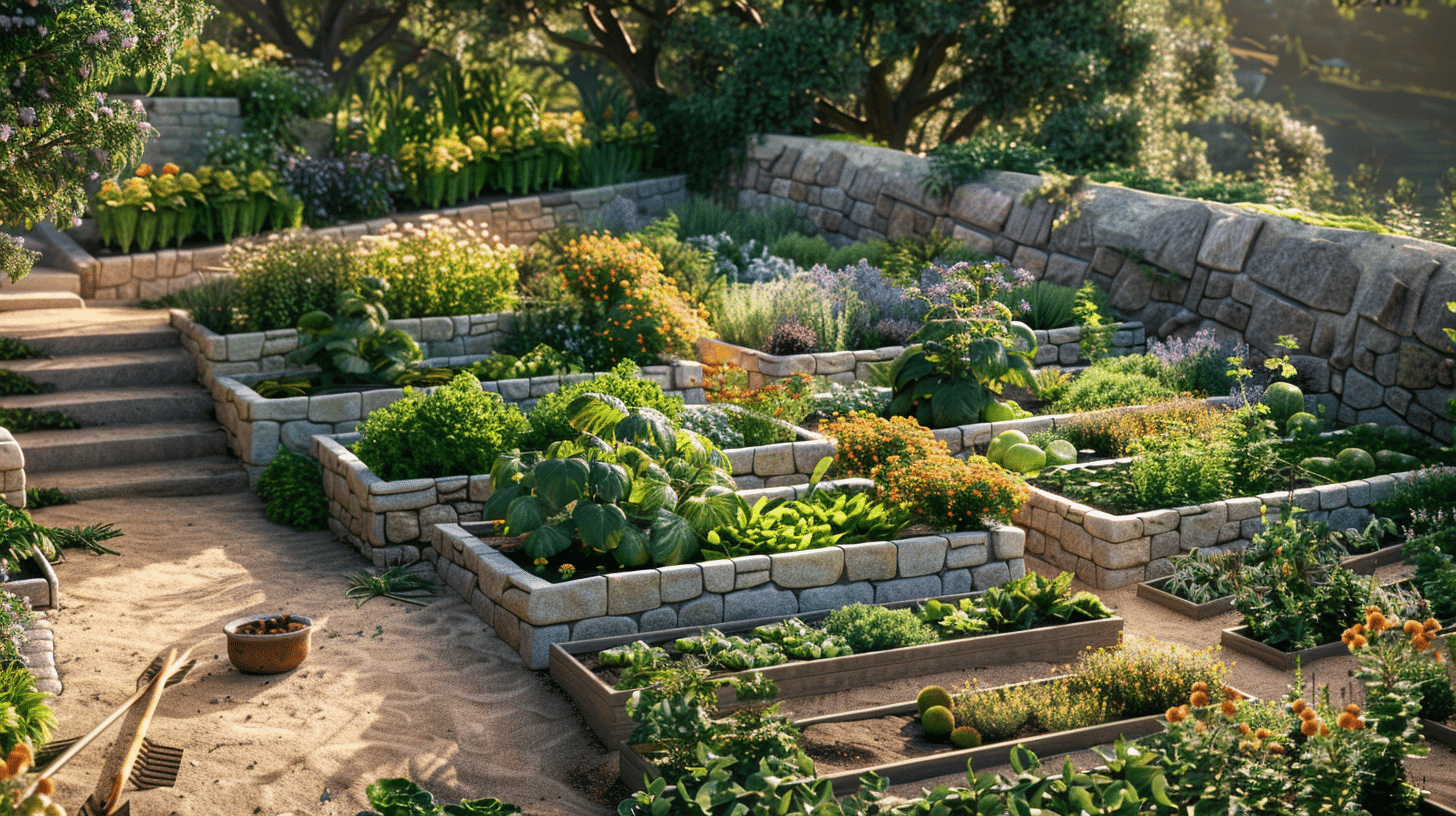Elevate your green space: top gardening beds raised tips

Transform your outdoor area into a flourishing oasis with elevated gardening. Learn how to choose durable materials that blend form and function, set the perfect height for effortless tending, and design a space that maximizes both beauty and biodiversity. Discover strategies for fertile soil, optimal plant health, and smart maintenance - all in our guide to masterfully crafted raised garden beds.
Maximizing Functionality and Aesthetics in Raised Garden Beds
When creating raised garden beds, both function and beauty are key. Here's how to balance the two:
A découvrir également : Exploring premier thailand real estate with fivestars
Choosing the right materials not only ensures longevity but also contributes to the visual appeal of your garden. Treated lumber is a popular choice, as it's been deemed safe for use since copper-based treatments replaced arsenic. For the eco-conscious gardener, alternatives like stone or brick offer a timeless aesthetic, though they may require more complex construction methods.
The ideal height for raised beds is a balance between easy access and the needs of your plants. While there's no one-size-fits-all answer, a range of 8 to 30 inches is typical. Taller beds minimize bending and deter critters, but consider shorter beds for crops that benefit from the nutrients in native soil.
A voir aussi : Meribel ski apartments: your alpine second home awaits
Design strategies play a crucial role in maximizing yield:
- Keep the width of beds within 2.5 to 4 feet to allow for easy reach.
- Ensure adequate spacing between beds for maintenance and material transport.
- Plan irrigation ahead, with drip systems often recommended for their efficiency.
For plant spacing, traditional row guides on seed packets may not apply. Instead, embrace the flexibility of raised beds, which can support more dense planting, increasing your yield. Remember to factor in the height of your crops to maintain ease of cultivation and harvesting.
Implementing these strategies can make raised bed gardening a highly productive and visually stunning component of your outdoor space.
Essential Tips for Raised Bed Gardening Success
Selecting the best soil mix is crucial for nutrient-rich plant growth in raised beds. A blend of compost, topsoil, and aeration amendments like perlite provides the foundation for healthy plants. To prevent waterlogging, ensure adequate drainage by using a soil mix that allows for proper water flow and by adding a layer of gravel at the base if necessary.
For healthy growth and yield, optimal plant spacing is key. Space plants according to their mature size to prevent competition for light, nutrients, and moisture. This not only fosters robust plants but also maximizes your garden's productivity.
Regular maintenance, including mulching, weeding, and seasonal soil amendments, is vital for the long-term success of your raised beds. Mulch retains moisture and suppresses weeds, while weeding ensures that your plants are not fighting for resources. Replenishing nutrients with compost or organic fertilizers keeps the soil fertile.
For a detailed guide on building and maintaining raised garden beds, be inspired to Explore innovative ideas and best practices for a thriving garden ecosystem.
Creative and Practical Raised Bed Gardening Ideas
Innovative designs in raised bed gardening not only enhance your garden's aesthetics but also boost its functionality. By embracing creative raised bed gardening ideas, you can transform your outdoor space into an enchanting, productive retreat. Here are some practical tips for personalizing your garden beds:
- Tiered raised beds: Construct multiple levels to create a visually dynamic gardening area. Each tier can be used for different types of plants, adding depth and diversity to your garden.
- Themed gardens: Design your raised beds around specific themes like a salsa garden with tomatoes, peppers, and cilantro, or a pollinator-friendly bed with a variety of flowers.
- Pathway beds: Integrate raised beds along garden paths, inviting a journey through your green space that's both practical and picturesque.
For those with a DIY spirit, building raised garden beds from wood offers an opportunity to tailor your garden to your unique style and needs. When selecting wood, opt for untreated, naturally rot-resistant options like cedar or redwood to ensure durability. Here are some construction tips:
- Use screws instead of nails for a sturdier structure that can withstand soil pressure and weather changes.
- Reinforce corners with metal brackets or wooden posts for added stability.
- Consider a bottom layer of hardware cloth to deter burrowing pests while allowing for proper drainage.
Whether you're a seasoned gardener or just starting, raised beds provide a rewarding platform for growing a variety of plants. With a bit of creativity and effort, your raised garden beds can become a standout feature that marries productivity with aesthetic appeal.
